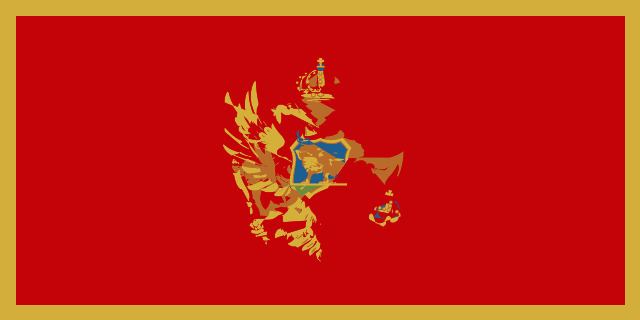1992–2006 → Government Parliamentary republic 2003–2006 (last) Filip Vujanović Area 13,812 km² Date dissolved 2006 | 1992–1998 (first) Momir Bulatović 1992–1998 (first) Milo Đukanović Founded 1992 | |
 | ||
The Republic of Montenegro (Serbian: Република Црна Гора / Republika Crna Gora) was a constituent country of Serbia and Montenegro between 1992 and 2006. The declaration of independence of Montenegro in 2006 ended the state union with Serbia.
Contents
After the collapse of the Socialist Federal Republic of Yugoslavia (SFRY), the remaining republics of Montenegro and Serbia agreed to the formation of the Federal Republic of Yugoslavia (FRY) which officially abandoned communism and endorsed democratic institutions. Montenegro was a constituent republic of the FRY until 2003, when the FRY was reconstituted as the State Union of Serbia and Montenegro, from which Montenegro separated in 2006 as an independent country.
Federal Republic of Yugoslavia
Upon entry into the FRY, Montenegro was led by President Momir Bulatović a former member of the Communist party in Yugoslavia and an ally of Serbian President Slobodan Milošević, whom Bulatović helped gain power during the Anti-Bureaucratic Revolution, in which he and Milošević gained power in their respective republics. In the final years of the SFRY's existence, Bulatović had supported Milošević's demands for a "one-member, one-vote" system in the Communist party congress which would have given numerical superiority to their cohort in the congress. This fostered the collapse of the Communist party and later the SFRY. Bulatović began to show reluctance to remaining in a union with Serbia when countries like Italy offered Montenegro the possibility of quick access into the European Community if Montenegro separated from Yugoslavia. However Bulatovic's brief endorsement of Montenegrin independence ended due to pressure from Serbia. In 1992, Montenegro joined the FRY after a referendum took place on March 1 of that year. In the same year, the capital Titograd (named after former Yugoslav leader Joseph Broz Tito) was renamed to its pre-communist name of Podgorica. In 1993, Montenegro abandoned its former Communist-era flag, and adopted a plain tricolour, similar to Serbia's but longer, and with a lighter blue for its centre stripe, marking a distinction between the two republics which had exactly the same flag during the Communist era. This flag would be in place until 2004.
Montenegro's continued union with Serbia provided legitimacy to the continuation of a Yugoslav state, important to Serbia as the continuation of a Yugoslav state would allow the federation to lay claim to former Yugoslav territory in Bosnia and Herzegovina and Croatia populated by Serbs. Also Montenegro had access to the sea which kept Serbia's sovereign body from being landlocked and allowed for a navy (merchant and military) to exist. Over time, the domineering nature of President Milošević and his allies within the federation provoked ordinary Montenegrins to shift towards independence, while creating a growing desire for regime change and support for opposition within Serbia. Strain with Serbia over economic policy caused Montenegro to adopt the Deutsche Mark in 1996, while waiting for the European Community to formalise a European currency. After Bulatović stepped down as Montenegrin president in 1998, the new president Milo Đukanović opposed Milošević (now Yugoslav President) and set Montenegro on a course to independence.
Serbia and Montenegro
After the fall of Milošević from power in 2000, Đukanović and the Montenegrin government put pressure on Serbia and the international community to demand an end to the rump Yugoslavia and that Montenegro would only be willing to be part of a loose confederation. These demands helped bring about the end of the FRY and created the looser State Union of Serbia and Montenegro in 2003, which stood until Montenegro separated from it in 2006.
